|
AT Invergarry station we
reach the west end of Loch Oich, which forms the highest point of the
Caledonian Canal, little more than a hundred feet above sea level. Looking
back across the little strip of land that separates the waters of Loch Oich
from those of Loch Lochy, we see a stream coursing down the hillside which
is one of those curious instances met with in watersheds where a man with a
spade might in a few moments turn aside the waters of the stream so that
instead of being discharged into Loch Linnhe on the west coast they would
ultimately find their way into the German Ocean, far on the other side of
Scotland.
A similar example is found in
the headwaters of the Clyde and Tweed, it being quite a question whether the
stream will flow east or west, and in times of spate salmon fry are
frequently washed from the headwaters of the Tweed into the upper reaches of
the Clyde, above the Falls of Cora.
In the present instance a
very practical old lady turned this singular formation of nature to good
account. She lived just on the march or boundary between Locheil and
Glengarry, the dividing line being formed by the stream. As often as the
Cameron factor came to collect his rent he found the stream flowing merrily
between him and the old woman's house, and whenever she saw Glengarry's
officer approaching on a similar errand she diverted the water to the other
side of her little property and defied him to lift his dues. By this
ingenious plan she maintained her house and land for a long number of years
free of all rent and taxes.
Directly opposite Invergarry station on the edge
of the loch there stands a small monument commemorating one of those deeds
of blood so common in the Highlands. Beneath the monument there bubbles up a
little spring of clear, cold water, whilst the top of the shaft is crowned
by a hand grasping seven heads transfixed with a dagger. Few stories are
better known in the Highlands than this tale of the seven heads, yet seldom
has so well-known a fact been confused with such a mass of conflicting
details. The case is
characteristic and throws a singular sidelight on the manners of the north
at the time of the Restoration.
One of the chiefs of Keppoch had sought a bride
outside the limits of his clan and had married "a woman from the south," as
she was contemptuously styled, one of the Forresters of Kilbaggie, in
Clachmannan. The two sons of this marriage were sent abroad to be educated
in Rome, and while there the father died, leaving his brother in charge of
the clan till such time as his son should have completed his course and
attained his majority. Five years after their father's death the two youths,
Alexander and Ranald, returned to Lochaber and took up the leadership of the
clan. With all the
enthusiasm of youth and a liberal education, Alexander set about improving
the condition of his people and made it his endeavour "to drive all thieves
and cattle-lifters from his boundaries." This running counter to all the
dearest traditions of Lochaber brought a certain amount of discontent and
disaffection in its wake. The uncle, Alastair Buidhe, an unscrupulous and
ambitious man, turned this dissatisfaction to account and fanned the spirit
of rebellion till a widespread conspiracy was formed against the youthful
chieftain. Finally the head of one of the minor septs, who had long
cherished a secret grudge against the family of the chief, set out one night
with his six sons and some other retainers, and having waded the river below
Keppoch Castle, entered the house "with the water of the Spean still in his
shoes." Finding the young chief defenceless in his bed, they plunged their
dirks into his body, killing him on the spot.
Ranald, the younger brother chanced to be out at
the moment of attack, and hearing of the disturbance hastened to the rescue
; but on entering the castle he was instantly seized and overpowered. He
cried to his uncle, Alastair Buidhe, who was present, to assist him, but
instead of trying to defend him the uncle plunged the first dagger into his
breast. The other conspirators followed suit and then fled to their own
homes. The clansmen quickly gathered, and John Macdonald, the famous poet,
better known as Ian Lom, the bare or biting bard of Keppoch, had the bodies
carefully laid out and honourably buried.
No one thought of seeking redress at the hands
of the Government, and had it not been for Ian Lom the incident would
probably have passed unavenged. As it was, the bard poured forth such a
torrent of bitterest invective against the perpetrators of the deed that he
had to fly the country and take refuge in Kintail. Glengarry, though loving
the name of Superior of Clan Donald, evidently thought that charity began at
home, and his love of justice was not sufficiently strong to make him risk
burning his fingers by attempting to call the culprits to account.
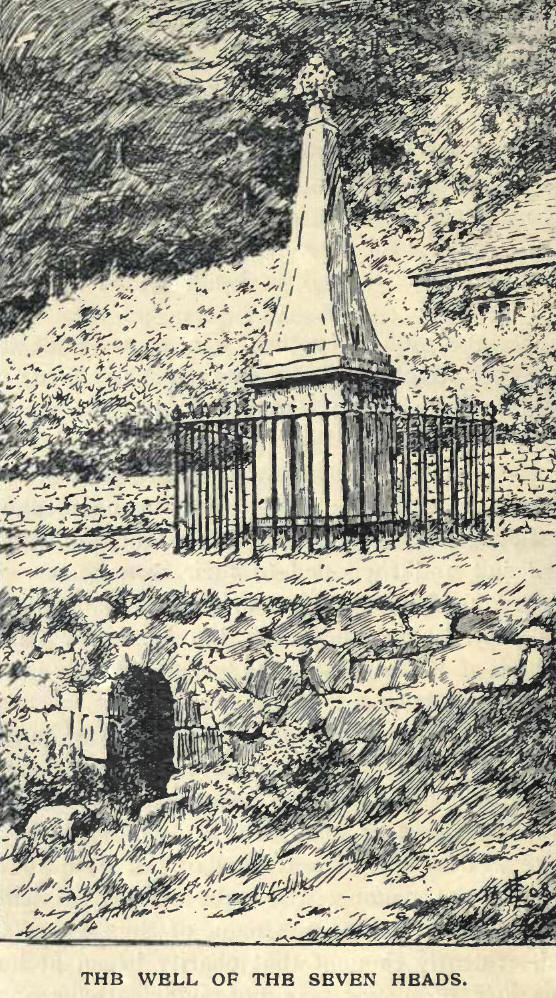
and bring the murderers to justice. The
conspirators expected an avenging party to come from Glengarry, and kept a
sharp look out upon the castle from a little bothy on the summit of one of
the hills of the southern range. But Ian I.om skillfully outwitted them, and
brought the little party of Islesmen up the valley of the Spean to Inverlair,
where they surprised the father and six sons in bed. The sons were instantly
dragged out and slain and the house set on fire. In the scuffle the father
almost escaped unnoticed, when Ian Lom cried out, "the six cubs are here but
the old fox is still in the den." At once a number of men dashed into the
blazing house and dragged out the father, dispatching him on the spot. The
bard then severed the heads from the bodies and putting them into a sack
carried them by a circuitous route to Invergarry. Before reaching the castle
he washed his gory trophies at this little spring. Then, after taunting
Glengarry with bitter sarcasm on the inactivity which left the avenging of
this foul murder to his distant kinsman, the poet laid the seven heads at
his feet, and they were afterwards buried in a little glade not far from the
present mansion house of Invergarry.
It is worthy of note that the mother of these
murderers on whom the beardless bard executed such summary vengeance was his
own sister. This
monument was erected and the inscription upon it invented by Colonel
M'Donell, the last chief of Glengarry, in 1812.
Some years ago an antiquarian enthusiast in Fort
William sought to prove the truth of this tradition, and dug up the mound at
Inverlair where the bodies were supposed to have been buried. The skeletons
were found buried without a coffin, whole and entire, excepting that each
one lacked a skull, thus confirming the main facts of the story current in
Lochaber. About half
way down Loch Oich we come to the famous old Castle of Invergarry. It stands
perched upon a rock rising sheer out of the waters of the lake, and in olden
times was a position of great strength. The rock is known as "Creag an
Fhithich," or the "Raven's Rock," and this used to be the war-cry of the
clan. 
The castle has an interesting history. It has
been built again and again on the present site and as often destroyed, till
finally it was burnt by Cumberland in 1745 and never restored.
In 1727 an English company, enticed by the
plentiful supply of timber in the district, set up iron smelting works in
Glengarry. The manager, finding the castle in ruins as a result of the
loyalist rising in 1715, roofed over the walls and took up his abode there.
But the clansmen were indignant at this desecration, as they deemed it, of
their chief's ancestral hall, and they fell upon the misguided "Sassenach,"
who narrowly escaped with his life.
During the troublous times of religious
persecution, Glengarry was one of the great centres round which the
Catholics of the north rallied. On account of its close connection with the
Catholic district of Knoydart, many of the Irish priests who came from Spain
and elsewhere to minister to the wants of their co-religionists in the
Western isles found their way to this district. The Hardwicke Papers tell us
that the Clanranalds were
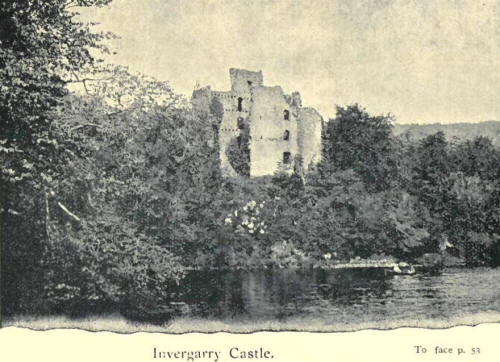
"always Popish," and "the people of all ranks
here are much better acquainted with Rome, Madrid and Paris, than they are
with London or Edinburgh." As early as 1670 a Catholic school was erected in
Glengarry, one of the very first established in the north.
During the time the castle remained in the hands
of the M`Donells persecution was unknown, but when it fell into the hands of
English soldiery persecution was attempted and many a priest was done to
death in the vaults of the ancient building.
As mentioned above, excepting the few square
feet of ground in the churchyard of Kilfinnan, the narrow compass of this
rock crowned with its ruined walls is all that now remains to the ancient
clan of the wide lands that once belonged to the M'Donells of GIengarry.'
Rev. Alex. Stewart tells a pretty tale of how
this rock came to remain in possession of the clan when all the rest of the
estates were sold. A
great friend of Glengarry who was paying him a visit came down to breakfast
one morning and found the chief with a letter in his hand and a look of
blank despair upon his face. As his friend entered the room Colonel M`Donell
rose and stretching out his hand greeted him warmly with the words: "Welcome
for the last time to Glengarry's house and board." His friend asked him in
amazement what this meant. "It means," said the Chief, "I have just had a
letter, and the estates must be sold to meet the claims upon me." "Is it
must?" quoth the friend. "Yes, must, there is absolutely no alternative."
"Then if the estate must go why not keep the castle with the Raven's Rock,
then with your back to the crag in the words of your favourite Fitz-James
you can still cry out:
"Come one, come all. this rock shall fly,
From its firm base as soon ayI"
With tears in his eyes the ruined chieftain
thanked his friend for his timely counsel, and in a few days the whole
estate save only this lonely crag had passed into the hands of strangers.
This Colonel Alastair Ranaldson M'Donell was a
notable character. An intimate friend of Sir Walter Scott, to whom he
presented Maida, the deerhound of which Scott was so proud, he shot a
grandson of Flora Macdonald in a duel, disputed with Clanranald the
supremacy of the Macdonalds, was the last Highland chieftain who travelled
the country with his "tail," married a daughter of Sir William Forbes - a
strong claim on Scott's affection—and after living a century behind his
times, died in 1828. He was the grand-nephew of Alastair Ruadh M'Donell,
alias Jeanson, alias Roderick Random, and now perhaps best known as "Pickle
the Spy." Scott .devotes a few lines of his journal to Colonel M'Donell. "He
seems to have lived a century too late, and to exist in a state of complete
law and order, like a Glengarry of old whose will was law to his sept.
Warmhearted, generous, friendly, he is beloved by those who know him. . . .
To me he is a treasure." With him passed away the final link that connected
the ancient Highland dispensation with the modern, and when he was carried
to the grave was seen for the last time the full accompaniment of Highland
costumes on such occasions.
It was and is still a point of honour amongst
the Highlanders amounting almost to superstition that a man should be buried
in the grave of his fathers, no matter how far he might have strayed from
home. This commonly entailed long journeys of twenty or thirty and
oftentimes more than a hundred miles. As there were no roads the coffin was
shouldered all the way, streams and rivers having frequently to he forded.
Yet by relieving one another in regular relays the distance was covered in a
surprisingly short space of time. Hence it came to be a disgrace in the
Highlands to be carried to the churchyard in a hearse. When Glengarry died
there was some question of sending a hearse from Inverness, but the clansmen
rose and said it would never enter the glen; "no, it was by the hands of the
people and shoulder high that Glengarry should be borne to the grave, and
they would never see- Mac-mhic-Alastair carried to Kilfinnan in a cart."
The pipes always attended every funeral to
inspirit the bearers on their march and to show honour to the dead. But on
such occasions the piper invariably followed the bier, just as at marriages
he played in front of the procession; the reason of course being that the
corpse was carried feet first and the place of the piper was at the head. If
the deceased were a person of note the clan standard was carried furled in
front of the coffin, while directly behind the bier a space was cleared for
the piper by four clansmen with drawn swords.
The inevitably early start entailed by the
distances to be traversed accentuated the custom of wakes, so common in all
northern countries. As
is well known wakes originated in the custom of watching through the night
to say prayers for the dead, and the word is merely a translation of the
familar term "vigil," so frequently used in the Catholic Church to-day.
Hospitality demanded that refreshments should be offered to the watchers,
and in time this degenerated into the carousal which we find as a blot on
our English statutes as early as the tenth century. In the Highlands be it
said, anything like intemperance at these wakes was practically unknown till
comparatively recent times. Drunkenness was never a national vice of the
Highlanders as of the English. Sir Walter Scott's well known description of
a Highland festival in the "Fair Maid of Perth" may be taken as in the main
true to life. "Even the liquor itself," he says, "did not seem to raise the
festive party above the tone of decorous gravity." Whisky, now so intimately
connected with the idea of the Highlands, seems to have been quite unknown
in the fifteenth and sixteenth centuries, and its introduction was very
gradual. Brandy imported from France was far more common, while the ordinary
alcoholic liquors in use were claret and the light Rhenish wines. Any
adulteration of these wines in Scotland was punishable with death as early
as 1482. In the
Highlands at the present day it is the custom for women never to follow the
funeral. In olden days the womenfolk who had attended the wake used to
follow as far as the first burn, where, after partaking of a light
refreshment, they returned, and the cortege proceeded on its way. Frequently
two men used to walk a few hundred yards in advance and offer refreshments
in the name of the deceased to any they met on the way. This parting cup was
intended as a last act of hospitality—always a darling virtue with the
Highlanders—and carried with it a tacit obligation of offering a prayer for
the person who was being carried to the grave.
An eye-witness describes the scene at the
funeral of Colonel M'Donell.
At daybreak columns of the clan streamed down
from every glen, each body being headed by the pipes. Arrived at the castle
they lined up on the lawn in their various companies, and in the large open
space before the door was pitched the great yellow banner of the clan
surmounted by a spreading bush of heather, the badge of Clan Donald. Shortly
after, the doors swung open and in the gloomy hall beyond appeared the
coffin with four stalwart Highlanders bearing flaming torches at each
corner. Waxen tapers fixed between the antlers upon the whitened stags'
skulls that surrounded the hall cast a weird light upon the tartans and
armour covering the walls. The "ceann-tigh," or heads of the cadet families,
were already assembled, and as they lifted the coffin Glengarry's piper, who
had taken his stand beside the colours, blew up the march "Cille-Chriost."
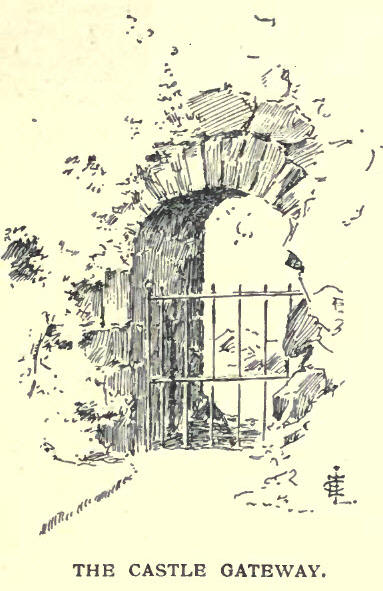
It was a terribly wild day and a thunder storm
was raging as the procession moved off. Passing the barbican of the old
ruined castle a brilliant flash of lightning lit up the sky followed by a
crash of thunder. As the roar of the thunder rolled round the hills, Allan
Dall, the old blind bard of the chief, burst forth into a piteous wail: "Ochon,
ochon, ochon, Mhac Mhic Raonail cha a-fhaic mi thu cha maic mi thu a-chaoidh!
A laimh dhcas a' ghaeil!" Then waving his bonnet towards the sky he broke
into a wild lament, calling the heavens and the storm to the grave of his
chief. In a few moments the refrain was taken up by all present, and a deep
surge from two thousand voices rolled forth the chorus to the skies.
"Is sona 'Rhean-hamns' air an cinch grian,
Is beannaicht' an corp air an tuit an fhras.''
"Happy the bride that the sun shines on,
Blessed the corpse that the rain rains upon."
I3y the time the procession reached the
graveyard at Kilfinnan the stream was swollen to a roaring torrent, and
there was no bridge across the burn as there is today. But the Highlanders,
well used to fording streams on such occasions, plunged fearlessly into the
flood. When the coffin reached mid-stream it seemed for a moment as if the
hearers with their charge would be swept away, when Angus, the chief's
eldest son, flung out the war-cry from the other side: "Lamb dhearg
hhuadhach Chlann DhomhuiIl!" Those behind pressed eagerly forward, and the
bier, borne by the strong arms of the willing clansmen, safely won the
further bank. A few minutes later and the Iast Chief of Glengarry lay side
by side with his famous ancestor, "Black John " of KiIliecrankie, beneath
the green sod of that little plot of ground, all that now remains to link
his family with the glens and the people he loved so well.
As the train leaps into the little tunnel at the
end of Loch Oich, the castle passes out of sight, but the high road clambers
over the summit of the crag and affords a magnificent view of the old castle
and its grounds. An interesting event was connected with this rock which may
he worth relating.
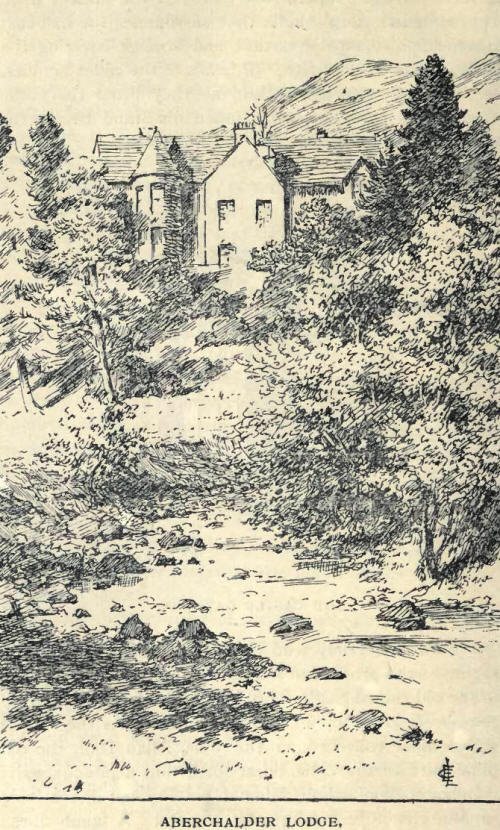
Shortly after the battle of Killiecrankie a
detachment of "Red Coats" was dispatched from Inverness under command of
Captain Ramsay with orders to take Glengarry Castle. On reaching the east
end of Loch Oich, in the absence of any bridge, it was found impossible to
cross the river, and the only way of approach lay in passing round the west
end of the lake. Ramsay was well known in the district as a daring and
resourceful officer, and nothing daunted he set about accomplishing his
purpose. Glengarry on the other hand was determined to crush him if possible
before he could reach the castle. As the little troop won the top of the
crag, Glengarry and his armourer were watching their advance from the castle
window. Alastair, the "armourer," had long vaunted his prowess in the use of
some small pieces preserved in the castle tower. Glengarry, half in jest,
turned to the old man and said, "If there is any good in those pop-guns of
yours bring down the officer who is leading that band of 'Red Coats,'"
pointing, as he spoke, to Ramsay who was marching at the head of the column.
``I will not answer for them all," replied the armourer with grim
determination, "but this 'cuckoo' will do a work which will surprise you,."
and unhitching one of the weapons he levelled it across the window-sill.
Just as he was in the act of taking aim Ramsay passed to the rear of the
column, but Glengarry with his fierce Celtic impatience cried, " Never mind
him, never mind him, blaze away at the head of the troop." The report rang
out, and the next moment a confused rush at the front of the troop told that
the armourer's pet weapon had carried death into the ranks of the
assailants.- "Well done, well done, Alastair," cried Glengarry patting him
on the back, "the 'cuckoo' has spat upon them," but the old armourer without
answering a word calmly took down another of the pieces from the wall,
carefully primed it, and laid it across the sill. While he was taking
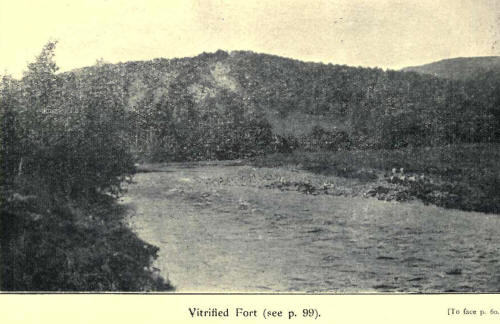
aim Captain Ramsay hurried to the head of the
troop to see what had happened. Once more the report rang through the glen,
and Ramsay fell a huddled mass at the head of his men. Frantic with
excitement, Glengarry turned to his faithful follower and cried, "Bravo,
Alastair, the Ramsay is as good as the 'cuckoo'; little did I think that
your southern toys could compare with my claymore." The soldiers in
confusion and alarm hurriedly picked up the corpses of their officer and
comrade and in all haste made the best of their way to Inverness. Just here
a glimpse may be caught of Aherchalder Mansion, a shooting lodge on the
Glengarry estate, which stands on an eminence to the right of the railway
and takes its name from the burn which runs at its foot. From Aberchalder
station a short run brings us to the village of Fort-Augustus. The flat
peat-moss that is crossed on the way is known as "Montrose's Mile," for it
was here that the intrepid warrior pitched his camp just before the battle
of Inverlochy. In a few minutes we pull up at Fort-Augustus which will
require a chapter to itself.
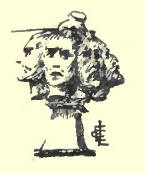 |

